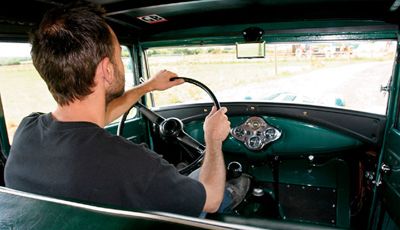
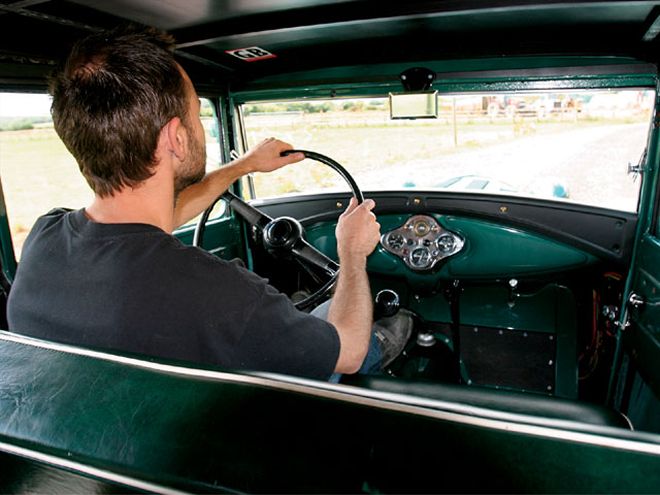
Unless you're planning on steering your rod or custom in soap-box style with a length of 2x4 and some string, you're going to need either a steering box or a rack-and-pinion. Or you may want to upgrade from a manual box to power steering. There have long been a few standard swaps that have stood the test of time, such as an F-1 or F-100 steering box in traditional '28-34 Ford rods, as well as the ubiquitous Vega cross-steer box, but never has the aftermarket been so packed with new products,and you may be surprised that there's an answer to your problems. All of which means we have another buyer's guide for you. We'll deal with some early stuff first and then visit a few manufacturers and suppliers.
First of all, though, let's look at how steering boxes work, and why one type is preferable over another.
In basic terms, the job of the steering box is to convert the rotation of the steering wheel through 90 degrees to operate an arm on the output side of the box-the sector shaft-and in the case of power steering, employ high-pressure fluid to help actuate the steering.
Most early steering boxes, such as early '30s Ford units, employ a worm and sector mechanism. The end of the steering column, or input shaft, has a worm gear (think of a corkscrew around the shaft), while the sector shaft-the output shaft that the pitman arm attaches to-has a sector (so called because it is only a sector of gear as it only operates within 70 degrees. It looks like a few teeth of a gear at right angles to the end of the sector shaft) that meshes with the worm gear. This all means that when the steering wheel is turned, the worm drives the sector, which rotates the sector shaft, which moves the pitman arm. This pushes or pulls the drag link, which steers the car. Simple, huh?
The worm and roller steering box is similar to the above, except a roller is mounted on bearings within the sector, which help reduce friction. With an hourglass-shaped worm, variable steering ratios are attainable that help with low-speed maneuverability. The '39-48 Ford box is a worm and roller type.
The worm and nut style is the final development of this design, where a nut meshes with and moves up and down the worm, operating the pitman arm either by use of a lever or through a sector. The most common type of worm and nut steering is what is referred to as "recirculating ball," where the nut in this case is a steel block that is mounted on the worm via an internal row of ball bearings that travel in grooves machined to match the worm gear. These ball bearings are recirculated through guides as the nut moves up and down the worm. Obviously this reduces friction over the worm and sector design, as the parts are not touching each other. The Vega, Corvair, GM525, and early Mustang steering boxes are examples of the recirculating ball box.
One final type of steering box, as supplied by Concept One and Flaming River's new Try V Power boxes for '60s-90s GM vehicles, use a rack-andpinion valve spool.
So why would you want to swap or rebuilt unit? Could be you want power steering or simply that your unit is worn. We've all driven cars with half a turn or more of play at thesteering wheel, which could be caused by any number of things, such as a bad power steering pump or hoses, a worn worm gear, or no lubrication. The biggest killer of steering boxes is lack of lubrication, and that includes incorrect lubrication, as oil is too thin and grease doesn't always get where it's needed. Correct steering gear lube is essential, as is following adjustment procedures, since you could-just as an example-be tightening the input shaft bearing nut or overly increasing the sector gear mesh load when you should be adding shims to adjust the worm shaft end play.
Of course you could want to change your steering box simply because you'd like to update your ride. There was a time when it was the "in thing" to install a Mustang box on an early rod, resulting in a huge number of rods out there, even now, that are so equipped.That's why we've included Mustang boxes in this guide-to let those owners know they can update without having to hack their chassis to accept a different box.
Hang fire Before you go rushing to replace your steering box, wait until you've read Part II of this feature next month. We'll look at steering rack conversions for Tri-Five Chevys as well as '55-57 T-birds, plus cross-steer rack-and-pinion systems for early Fords.
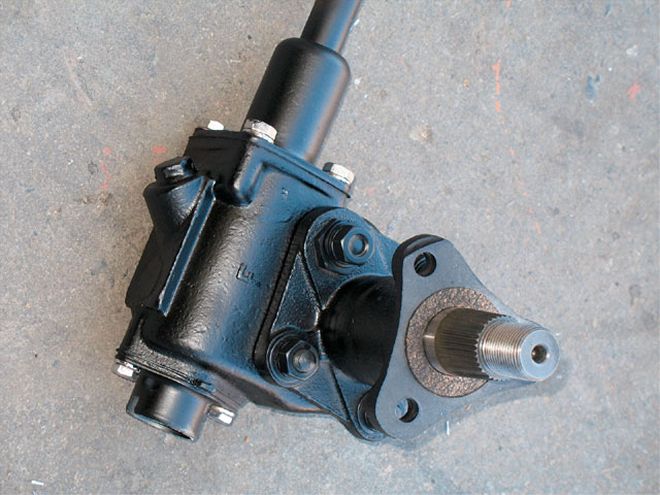
N.O.S.-Neat Ol' Stuff
There's a good chance you may want to use an old steering box, such as the F-1/F-100 conversion, and if this is the case, it'll invariably need rebuilding. If you're using an F- 100 box, Mid Fifty F-100 Parts in Arizona can do this for you or supply the parts, which are also available from Dennis Carpenter Reproductions. You can now even bolt an F-100 box directly into a '32 Ford chassis thanks to Vern Tardel or Speedway Motors (shown above), both of whom offer a neat steering box wedge, eliminating any modifications normally needed to align the box correctly.
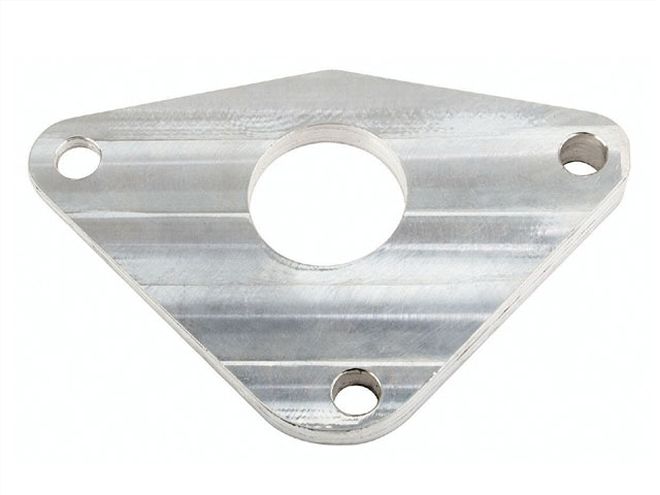
And while we're on the subject of early Fords, I'm sure more than a few readers are still running the stock steering boxes in their '32, '36, or '40 Fords, as well as in later models. C&G Early Ford Parts can rebuild car and pickup boxes from '32-56. It's worth pointing out here that Ford went from drag link-style steering to cross steering in 1935, a system that is mimicked now with the use of a Vega-style steering box.
But what are the advantages of cross steering as opposed to a drag link? Apart from appearance-a short drag link leading from the steering box near the firewall to the left-hand front spindle suits a traditional rod but would look out of place on a contemporary one-the main benefit is that any bumpsteer is eliminated with cross steering. Without getting into a complex explanation (covered in depth in the October 2007 issue of R&C), as a frontend moves up and down, it will move back and forward, causing the wheels to turn with no driver input, unless a drag link is of the correct length and geometry. With a Vega-style box mounted forward on the left chassis rail, and the drag link running across the car to the righthand spindle-hence the term "cross steering"-the drag link is unaffected by bumpsteer.
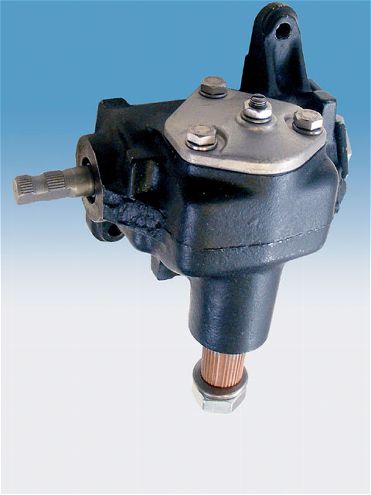
Vega-Style
The '71-77 sub-compact Vega used a then-new GM140 steering box. It stands to reason then that use of the 140 should be limited to cars weighing less than 2500lbs. The Vega box shares the same mounting pattern as the 122/525 manual, the 605 power, and most 800 power boxes. You have several options if you're looking for a Vega box. Borgeson offers a quality rebuilt Vega steering box, as well as a reversed version with the input shaft swapped end for end, allowing the box to be used in a side-steer application.
If you want new, Remy Racing & Performance Products offers an allnew stock Vega box with a ratio of 20.9:1. If you want something a little more showy or with a quicker ratio, you can call Flaming River and order a chrome-plated Vega-style box featuring a cast-steel housing that comes with a 20:1 ratio as standard, but is also available with a quicker 15:1.
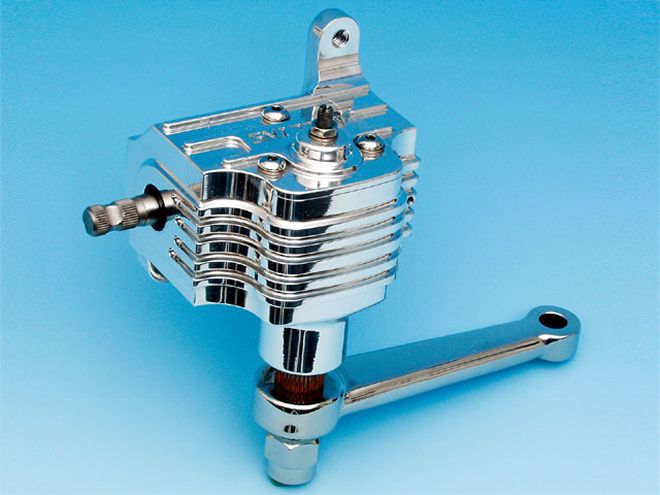
Billet Manual Steering Box
Definitely at the upper end of the market, Borgeson's A-1P billet aluminum manual box is most often used in early street rods, but will fit anywhere a Vega cross-steering application is suited. The case is machined from 6061-T6, while the top and side caps are denser 7075-T6 for added strength. Designed as a direct replacement for a Vega box, it features all new bearings, bushings, and races, with OEM-spec shafts, stock 22:1 ratio, with a 6-inch eye-to-eye pitman arm. As with all Borgeson and Mullins boxes, it comes pre-adjusted and filled with lubricant. The billet box also includes a lifetime warranty to the original purchaser.
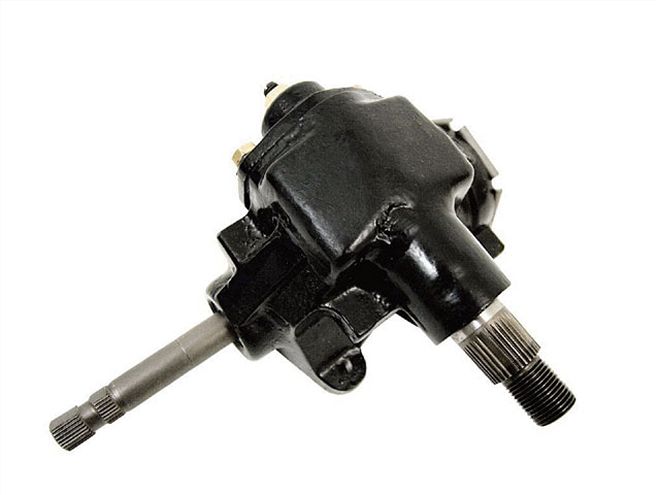
Vega's Big Brother
Many mid-'30s-andlater street rods are too heavy to use a Vegastyle steering box. The 525-series manual steering box is stronger than a Vega box, but still compact enough to fit in a variety of chassis. Speedway offers a bolt-on mount for installing the 525 box in 1935-48 Fords (they also offer a Vega-style box and kit for 1934-and-earlier rods). This box is also a great way to save weight and space on cars that employ GM subframes. This steering box fits many mid-'60s-and-later GM applications, and can be adapted to a variety of '35-and-later street rods. Speedway offers a variety of mounting brackets, universal joints, pitman arms, steering shafts, and tie rods to help complete the installation of this steering box.
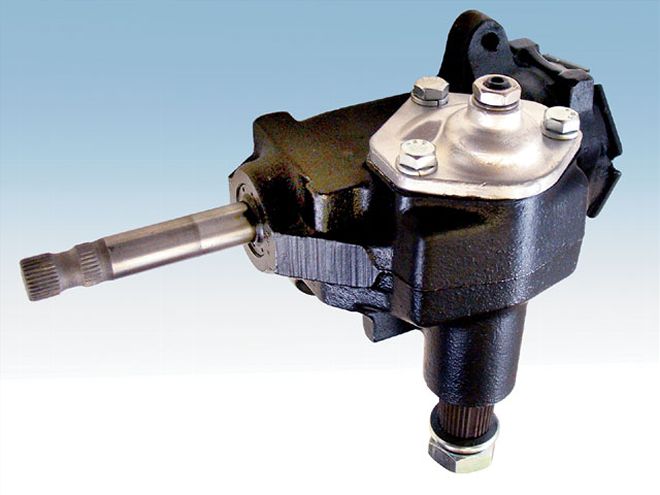
Manual Saginaw 525
The box was renamed 525 in 1986, when the input spline on the 122 box was changed from 3/4-36 to 3/4-30. The 525 manual box was used extensively by GM. The 525 box is recommended for manual box applications on street rods, especially those more than 2,500 lbs. The location of the motor mounts often restricts the box size in street rod applications prior to '34 with modern V-8 engines. This accounts for the popularity of the smaller Vega box. The 525 boxes can be used on some pre-'34 applications with slight frame modifications. Borgeson offers a number of 525 variations, such as a rebuilt 525, a short-input rebuilt 525 with a 1-inch input shaft, a reversed rebuilt 525, a Mullins quick-ratio 525 with a 16:1 ratio versus the stock 22:1, and a quick-ratio 525 short input. There's also a Mullins 122 rebuilt manual box available with the 36-spline input shaft if required. (Borgeson owns Mullins, so the latter are available through Borgeson.)
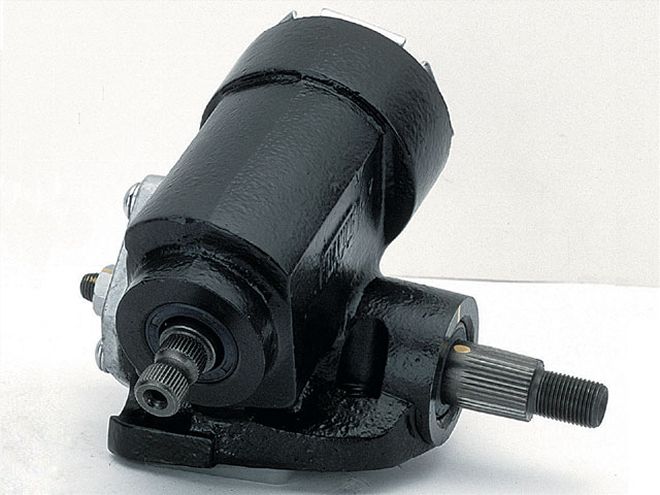
Corvair-Style
The Corvair box, introduced in 1960, has long been popular with street rodders, especially the early, pre-'64 aluminum bodied versions, though usually the internals are reversed to allow the box to sit above the chassis 'rails and operate a drag link in the correct direction. Flaming River offers this brand-new bolt-in replacement for late Corvair boxes. All new and manufactured in steel, the heavy-duty internal needle bearing design offers smoother performance and longer life than the stock Corvair unit. With 3 1/2 turns lock to lock, options include 16:1 quick ratio and chrome finish. Pitman arms are also available, and if you're putting one of these in a Corvair, Flaming River has shaft kits too.
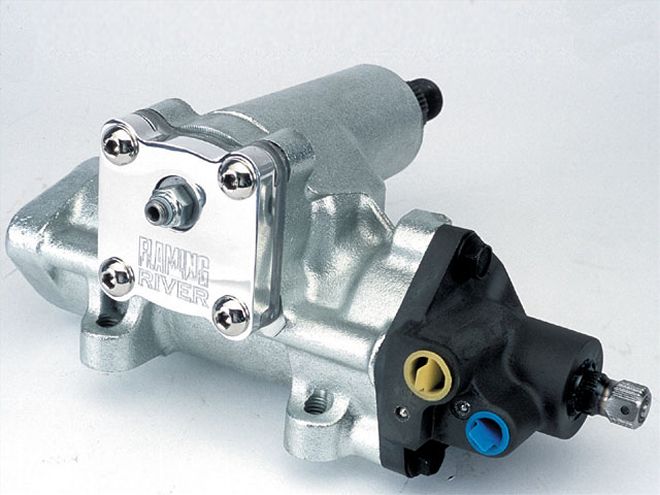
Power Assist
The FR1560/1/2/3 series is a frontsteer power steering box that fits many GM applications from the mid-'60s to early '90s. It features a four-bolt mount but also fits the stock GM three-bolt pattern. Featuring a rack-and-pinion-style valve assembly (for smooth, precise steering), needle bearings, and a billet cap, its trivalent chromium-free plating offers more corrosion resistance than paint. With four ratios-12:1, 14:1, 16:1, and 17:1, hence the four part numbers-and a 3/4-inch 30-spline input shaft, you can have the steering feel you prefer in virtually any application.
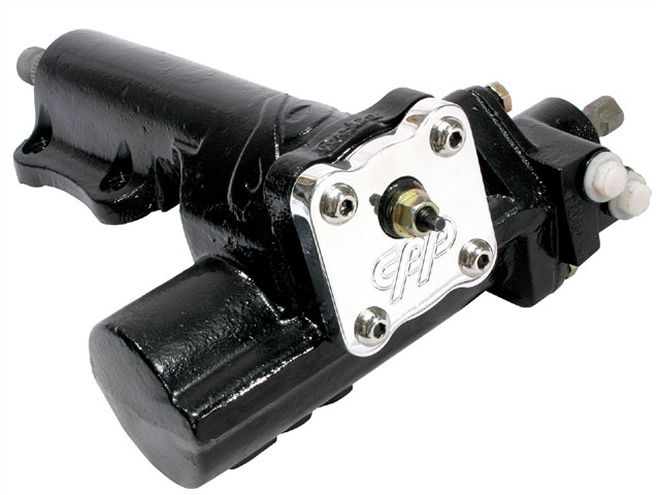
1955-57 Chevy
Classic Performance Products' 500 Series box features a one-piece housing, all new parts, and a 14:1 ratio, and accepts the original pitman arm. It's a direct replacement for the Saginaw 605 box and produces excellent road feel and driver feedback, at the same time eliminating the worn 605's leaky and sloppy steering. The box is available on its own or as part of a conversion kit that includes the 500 Series box, power steering hose kit and pump and early model Chevy small-block V-8 power steering pump bracket. Optional chrome finish, new pitman arms, and polished covers are available.
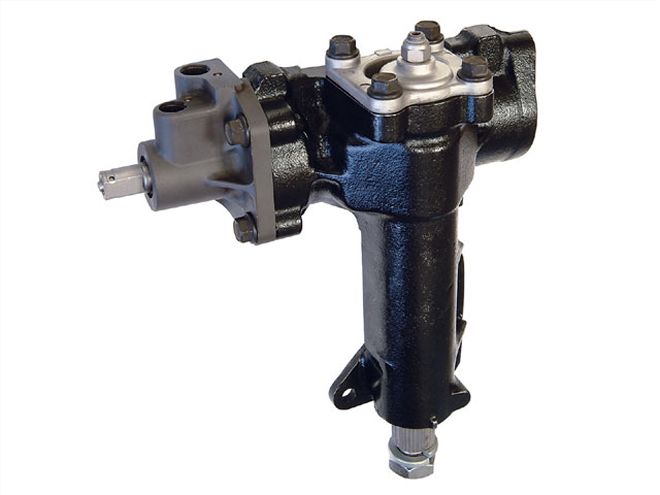
1955-57 Chevy Power Conversion
As above, this is a rebuilt 605 power steering box with a new sector, or pitman shaft, to suit the Tri-Five application. The mounting bracket can be bolted or welded in place, the boltin option is suited to a completed car where access to weld on the frame is restricted. The box has a 16:1 ratio, compared to the stock Chevy 22:1 ratio manual box. The 605 conversion is 3/4-inch wider than the stock manual box so header clearance could be an issue, though easily solved by fitting block-hugger headers. Somewhat more complicated is shortening the stock column by 3 inches, especially on column-shift versions.
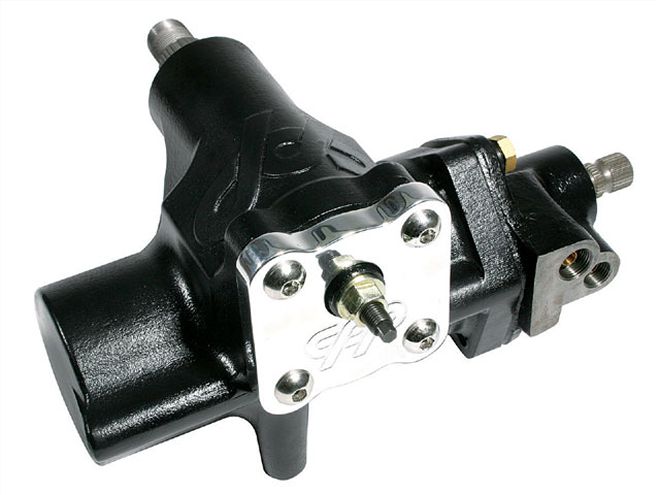
1958-64 Chevy
CPP's new CP50003 power steering box for the 1958-64 Chevrolet is the latest member of the 500 Series family. Like the '55-57 version, this also features a 14:1 ratio and CPP-engineered recirculating ball gears for low friction and increased steering response. An open-centered, rotary type valve provides smooth operation throughout the steering range. This is a direct replacement for the manual steering box on the 1958-64 fullsize Chevy. The mounting bosses are integrated into the casting, eliminating the need for an external bracket and lining up perfectly to the column without shims. This box works with both the original and aftermarket steering columns and sway bars.
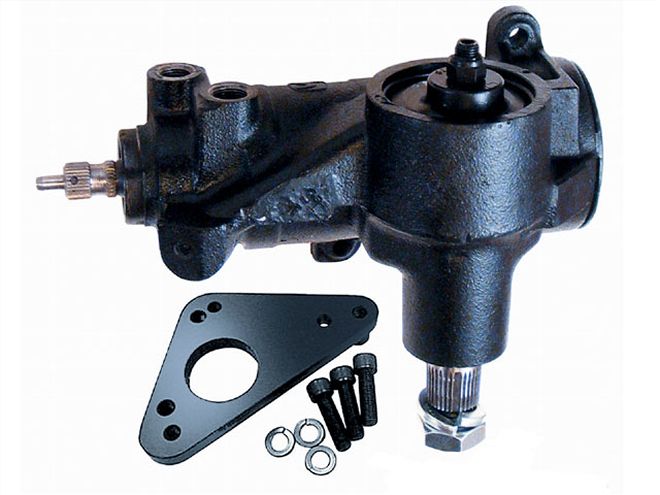
1958-64 Chevy Power Conversion
Borgeson uses a rebuilt Saginaw/GM 605 box with a bracket that locates the box as per the stock item. It uses the stock pitman arm but requires a drag link adapter or a drag link from a manual car if originally equipped with power-assist steering. The stock rag joint will not fit the 605 box, Borgeson recommending replacing the joint and intermediate shaft with its vibration reducer/U-joint and a splined shaft that fits the female spline at the column.
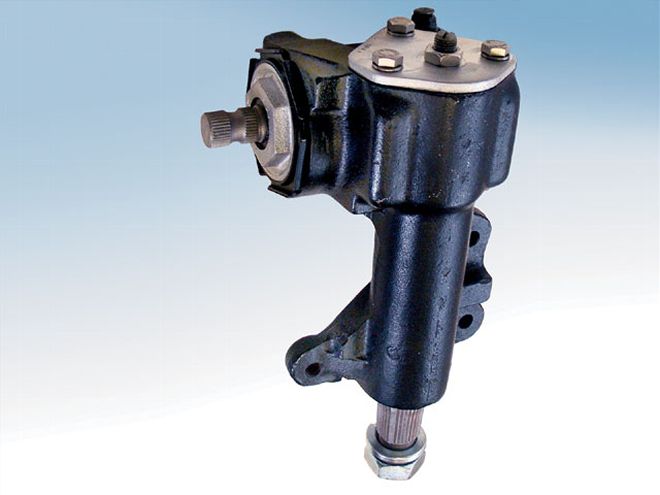
Other Applications
Before we run out of room here, we figured we'd tell you that Borgeson can also supply rebuilt '65-66 Mustang boxes with the long input shaft, in four-(16:1) or five-turn (20:1) ratios, as well as '67-70 Mustang boxes (shown here), again in four- or five-turn versions, plus direct-replacement rebuilt '55-57 Chevy manual boxes with either the original long shaft or a short input shaft. Both are available in 16:1 ratio, against the stock 24:1.
Rebuilt Saginaw 605 power steering boxes are available, too (the smallest Saginaw power box available), which have the same pitman spline and mounting holes as a 525 manual box, as well as Saginaw 800 heavy-duty power boxes, suited for larger cars. These are brand new, not rebuilt, and are variable ratio boxes, with quick ratio for parking and low speeds, and a slower ratio for highway driving.
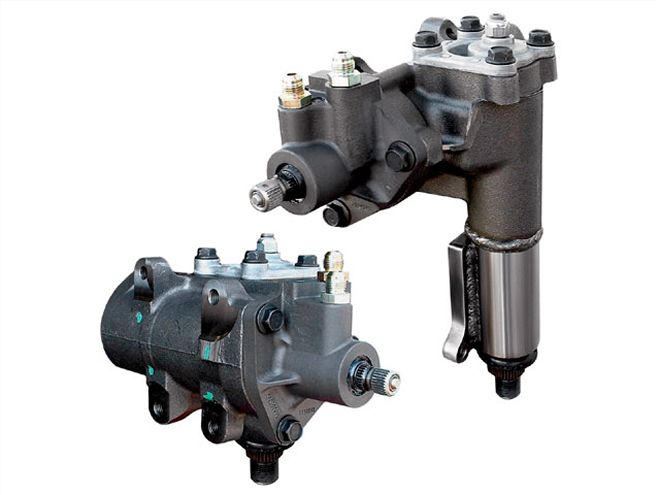
1955-64 Chevy
Concept One is another company that offers an all-new power steering box for '55-64 Chevys. The company's Performance Steering Gears utilize a rack-andpinion - style servo for quick response and precise control and are available with a 12.7:1 performance ratio or 14:1 sport ratio. They're direct replacements for 605, 700-series, or manual steering boxes and are supplied with a new pitman arm.
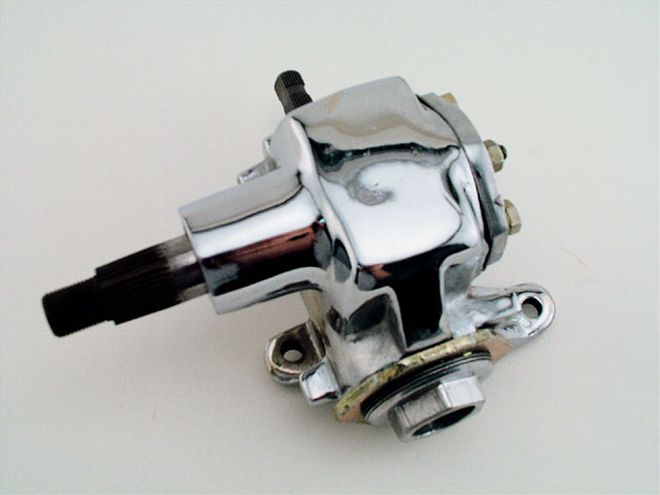
More Choices
Southern Rods and Parts can supply brand-new Vega manual boxes or new 525-series boxes, as well as chromed Vega units. They also stock CPP's CP50000 bolt-on Tri-Chevy power steering box and can supply a full line of U-joints and linkages.
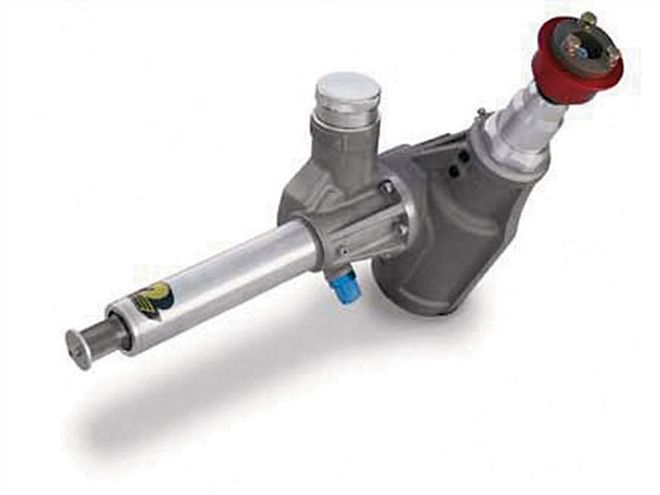
Cowl Steering
Nothing looks better on a track-style hot rod than cowl steering, despite its dubious bumpsteer geometry in street applications, so how about a genuine oval track power cowl steering box? KSE Racing is the market leader in Sprint and Midget steering gears, and the Gen 2 is the first major design update in 25 years. It features a built-in reservoir and is super simple to hook up to a pump. Sure, it's a race-only item and we're positive the manufacturer won't recommend street usage, but when did that ever stop hot rodders from adopting race parts? KSE can also supply pitman arms and other associated parts.
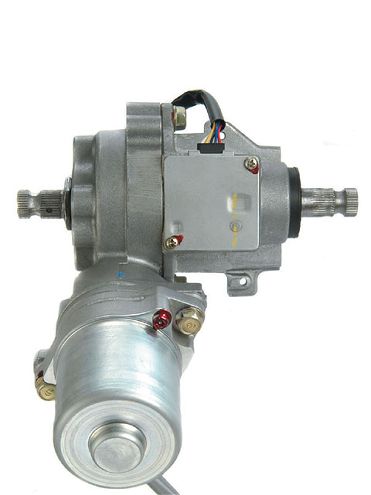
Electronic Power Steering
OK, so it's not a box, but it's not a rackand-pinion either, and it's very definitely a cool product. Fancy power steering but don't want to lose your original manual box or even rack-and-pinion? Then this is for you. Installed in-line between the steering column and rack or box, it requires no belts, pump, or hoses and will not cause fluid leaks or horsepower loss. Better yet, with a permanent mechanical link, it provides road feel and a fail-safe to manual steering should electrical power be lost. hey, it even has competition history, having been installed in class-winning cars at Le Mans in 2006 and 2007.